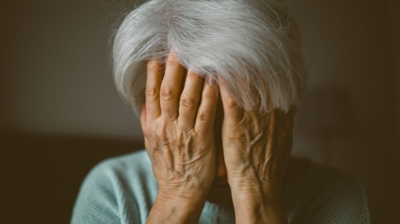In the early 1980s, reports began to surface of increased cancer rates and other health problems among those stationed at Camp Lejeune, a U.S. Marine Corps base in North Carolina. An investigation revealed that the water supply at the base had been contaminated with a variety of chemicals for more than three decades.
In those three decades, more than one million service members, civilian contractors, workers and their families were exposed to contaminated water. The U.S. government has acknowledged the link between exposure to Camp Lejeune water and an increased risk of certain cancers, kidney disease and other health problems.
It has been a long and winding path to achieve justice for Camp Lejeune residents, but now, if you or someone you love has suffered health consequences from Camp Lejeune water, there are benefits available to you.
Below, we’ll outline the history of contaminated water at Camp Lejeune and the long road to justice for Camp Lejeune veterans, workers and family members.
AUGUST 2022: New opportunity to obtain compensation for injuries suffered as a result of exposure to toxic water
In July 2022, Congress passed the Honoring Our PACT Act, which contains language of the Camp Lejeune Justice Act. This new legislation provides an opportunity for those who were exposed to Camp Lejeune water to obtain compensation for their injuries. The act provides for a two-year window for filing claims.
If you or someone you love has suffered health consequences from exposure to contaminated water at MCB Camp Lejeune, we encourage you to contact the Camp Lejeune attorneys at Niemeyer, Grebel and Kruse today to learn more about your legal rights and options under the Camp Lejeune Justice Act and Honoring Our PACT Act – (314) 350-1900.
History of Marine Corps Base Camp Lejeune
Camp Lejeune is a U.S. Marine Corps base located in Jacksonville, North Carolina. The base was established in 1941 in the lead-up to the American entry into WWII, and it has been used for training purposes since then.
The 156,000-acre camp includes 11 miles of beachline to support amphibious assault training operations, as well as three urban assault training facilities and 80 live fire ranges. Resident commands at MCB Camp Lejeune include a number of Marine Corps units.
In the early 1980s, reports began to surface of increased cancer rates and other health problems among residents near Camp Lejeune. Over the years, scientific and medical evidence had begun to accumulate showing that the drinking water at the base had been contaminated with a variety of toxic chemicals.
What happened to the water at Camp Lejeune?
The drinking water at Camp Lejeune was found to be contaminated with numerous toxins at concentrations ranging from 240 to 3,400 times the levels permitted by safety standards.
The main chemicals involved were perchloroethylene (PCE), a dry cleaning solvent, and trichloroethylene (TCE), a degreaser.
Other toxins that were found in the water supply included tetrachloroethylene and benzene. These chemicals are known carcinogens, and exposure to them has been linked to an increased risk of cancer, birth defects and other adverse health effects.
Notably, vinyl chloride was found in the drinking water at Camp Lejeune. Exposure to vinyl chloride has been linked to an increased risk of liver cancer, brain cancer and other health problems.
In total, more than 70 toxic chemicals had been discovered in the Camp Lejeune water.
The water contamination at Camp Lejeune resulted from two sources: two of the base’s eight water treatment plants (the Tarawa Terrace and Hadnot Point treatment plants) and an off-base dry cleaning facility.
Despite warnings from laboratories contracted to test for water contamination, the federal government continued to claim that the Camp Lejeune water was safe to drink as late as the mid-1980s.
That changed in 1999, when the Marine Corps first began to notify former residents that they might have been exposed to contaminated drinking water. However, the effort to notify former residents that they were exposed to contaminated water didn’t begin in earnest until 2008, when it was first mandated by Congress.
Class action lawsuits and Congressional support for Camp Lejeune victims
As we mentioned above, it has been a long and winding path for non-military workers, soldiers, residents and Marine Corps family members to find justice in this case.
The heart of the issue lies with North Carolina law. The North Carolina statute of repose states that any civil action against a governmental entity must be filed within three years of the last act by that governmental entity that caused the injury.
This meant that victims of the Camp Lejeune water contamination were unable to file suit against the United States government, as the last act by the government occurred more than three years before they were aware of their injuries.
In 2010, 10 lawsuits were consolidated into one in Georgia’s Northern District Court. The plaintiffs in the case alleged that the United States government was negligent in its supervision of the water treatment facilities at Camp Lejeune, and they sought to recover damages for their injuries.
The court dismissed the lawsuit, citing North Carolina’s statute of repose.
The 2012 Janey Ensminger Act
In 2012, Congress passed the Janey Ensminger Act, named after a nine-year-old girl who died of leukemia after being exposed to the contaminated water at Camp Lejeune.
The Janey Ensminger Act provides health care for service members and their families who were exposed to the contaminated water at Camp Lejeune. For more information on the health care benefits available to troops and family members, click here to view the Department of Veterans Affairs website. The bill applies to 15 specific conditions related to exposure of the water contamination at Camp Lejeune.
While it was a big step forward, what was notable about the Janey Ensminger Act is that while it established a means for troops and families affected to be reimbursed for medical expenses, veterans stationed at Camp Lejeune were unable to receive compensation beyond that.
The 2022 Honoring our PACT Act and Camp Lejeune Justice Act
Efforts to pass a Camp Lejeune Justice Act in 2021 failed, but the effort was renewed in 2022 when the Camp Lejeune Justice Act was rolled into the SFC Heath Robinson Honoring Our PACT Act.
The language in section 804 of the Honoring our PACT Act allows for monetary relief for those exposed to Camp Lejeune water. In order to be considered for compensation, someone must show:
- They spent at least 30 days living, working or otherwise being exposed to the water contamination at Camp Lejeune between 1953 and 1987. This includes in-utero exposure.
- They developed a medical condition related to exposure of one or more of the toxic chemicals in the water.
There is no requirement to prove negligence in this case, and the restrictions under the North Carolina statute of repose have been stripped, allowing veterans and family members to more easily obtain financial conversation for their toxic exposure.
Have you or a loved one been exposed to Camp Lejeune water between 1953 and 1987? Contact Niemeyer, Grebel and Kruse today
With the new rights enabled by the Camp Lejeune Justice Act and Honoring our PACT Act, it’s now possible to obtain compensation for exposure to toxic chemicals in the Camp Lejeune water.
With a team of experienced class action attorneys, Niemeyer, Grebel and Kruse are here to help you get the compensation you deserve. today for a free consultation – (314) 350-1900.






